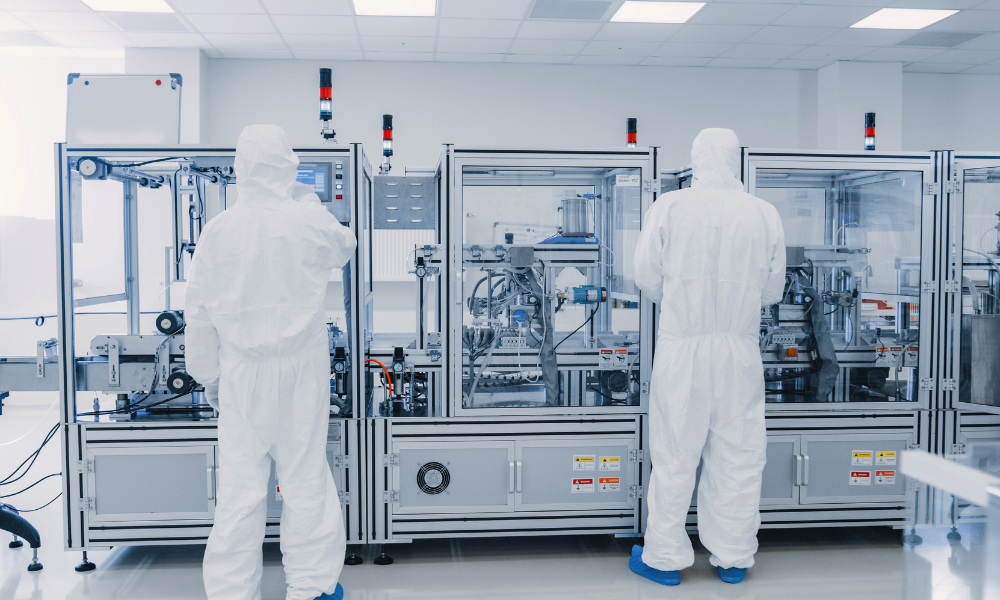
As the healthcare industry continues to advance technologies to improve outcomes from medical procedures, medical devices are becoming increasingly sensitive. To avoid damaging these sensitive materials, manufacturers have needed to turn to aseptic manufacturing. For many sensitive devices, aseptic manufacturing has provided a critical pathway to market when traditional medical device sterilization methods risked damaging the product’s materials, coatings, or functionality. However, the method brings high costs, complex validation, and scalability challenges.
Aseptic manufacturing might not be a viable financial option for all companies, and if those companies can’t find a terminal sterilization method for their device, then they won’t be able to bring their product to the market. Supercritical carbon dioxide (scCO₂) sterilization is one option that medical device companies are exploring as an alternative to aseptic manufacturing while still preserving the functionality of their sensitive product.
Aseptic Manufacturing
Aseptic manufacturing plays an essential role in the production of many complex, sensitive devices that would otherwise be impossible to produce. The process comes with several operational and regulatory demands.
Maintaining sterile conditions during assembly requires a highly controlled cleanroom environment, strict gowning procedures, and extensive environmental monitoring. The process is labor and capital intensive; it requires specialized training and meticulous attention to detail to prevent contamination.
Aseptic manufacturing requires rigorous and highly detailed validation to meet regulatory standards. Manufacturers must implement continuous process monitoring programs and demonstrate sustained control over aseptic conditions to meet regulatory requirements. In addition, scaling aseptic operations to accommodate higher production volumes often requires major infrastructure investments, additional cleanroom space, and increased staffing.
Although aseptic manufacturing remains essential for certain devices, manufacturers are increasingly exploring alternative sterilization methods that better support today’s evolving product designs and production demands.
Bridging the Gap with Supercritical CO₂
Unlike traditional methods that rely on heat, radiation, or toxic chemicals, supercritical CO₂ sterilization is low-temperature, minimally reactive and non-toxic. It is especially well-suited for biomaterials that are becoming more prevalent in today’s complex devices. The process helps preserve properties of bioresorbable polymers, biologics, tissue scaffolds, and even electronics that would degrade under more aggressive sterilization conditions.
Supercritical CO₂ technology can often be tailored to specific requirements of a medical device with the goal of meeting industry-standard sterility assurance levels (SAL), including 10-6 SAL for terminal sterilization. Supercritical CO₂ sterilization also streamlines the manufacturing process since it can be incorporated into the manufacturing process of device manufacturers. This shift simplifies the overall manufacturing workflow. The validation and on-going monitoring of manufacturing processes for supercritical CO₂ is less burdensome than what is required for aseptic manufacturing, reducing both time and regulatory burden during development and production. Supercritical CO₂ also scales for larger volume requirements, delivering consistent sterilization results from small pilot runs to full production volumes. This flexibility helps manufacturers avoid bottlenecks by allowing faster production ramp-ups without the need for changes to assembly workflows. Whether your company is just starting with aseptic manufacturing or you’ve been doing it for decades, evaluating new terminal sterilization solutions is always a good idea.
Available Resources
- Sterilization development service providers: NovaSterilis offers material compatibility testing and process validation tailored to supercritical CO₂ sterilization.
- Peer-reviewed studies demonstrate the effectiveness of supercritical CO₂ sterilization in pilot formats, confirming bioburden reduction and device preservation.
- Download the Material Compatibility Guide to see if the components of your medical device are compatible with scCO2 sterilization.
Summary: Aseptic Manufacturing – Now and the Future
While aseptic manufacturing has long filled the gap for products that can’t tolerate conventional terminal sterilization, a growing number of medical device companies are now evaluating new sterilization modalities. These companies that invest in assessing a wider selection of sterilization modalities (each offering unique compatibility) will inevitably capture cost savings by avoiding aseptic manufacturing.
Supercritical CO₂ sterilization is one such compelling alternative, providing terminal sterilization at low temperatures, with broad material compatibility and a more streamlined manufacturing process. For manufacturers looking to reduce their reliance on aseptic manufacturing while ensuring patient safety and regulatory compliance, supercritical CO₂ is an option worth serious consideration.
NovaSterilis offers material compatibility testing, process development services, and regulatory support to help device manufacturers assess supercritical CO₂ sterilization for their products.
To learn more about how supercritical CO₂ fits into your medical device sterilization strategy, contact us now.

